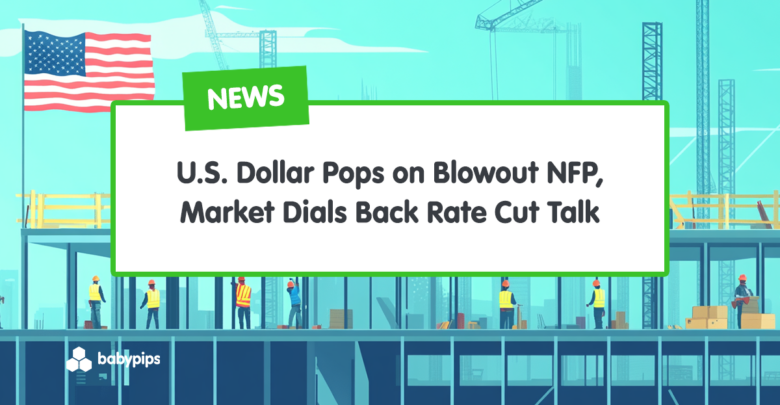The U.S. job market showed surprising strength in June, with nonfarm payrolls rising by 147,000 compared to the 110,000 jobs forecast. That marked a solid rebound from May, although the private sector only added 74,000 jobs, the weakest gain since October when hurricanes disrupted hiring.
Most of the upside came from state and local governments, which added 70,000 positions. Healthcare contributed 39,000 jobs, and leisure and hospitality brought in another 20,000.
On the weaker side, manufacturing and professional business services both lost 7,000 jobs, likely dragged by pressure from ongoing tariff policies. Federal government employment also dropped by 7,000 due to continued layoffs tied to administrative cutbacks.
Link to official U.S. Labor Market Data (June 2025)
Babypips U.S. jobs (June 2025) Audio recap
Key components of the June 2025 report:
- Nonfarm payrolls rose 147,000 vs 110,000 expected
- Unemployment fell to 4.1% from 4.2% (market expected 4.3%)
- Private sector added only 74,000 jobs – the weakest since October
- Government hiring (70,000) masked private sector weakness
- Manufacturing and business services both shed 7,000 jobs
The unemployment rate unexpectedly dipped to 4.1% from 4.2%, catching markets off guard after expectations for a rise to 4.3%. Wages cooled slightly, with average hourly earnings increasing just 0.2% m/m and 3.7% y/y.
While not alarming, the steady wage growth still reinforces the idea that inflation may stick around longer than hoped.
Market Reaction
U.S. Dollar vs. Major Currencies: 5-min
Overlay of USD vs. Major Currencies Chart by TradingView
Traders viewed the strong jobs report as confirmation that the Fed will stick with its patient approach on rate cuts. The U.S. dollar, which had been edging higher ahead of the release, rallied broadly and sharply once the numbers came in much stronger than expected.
With wage growth steady at 3.7% y/y and the economy showing resilience despite ongoing tariff pressures, the Fed has little incentive to move quickly. The report took a July rate cut off the table and raised serious doubts about a September move, keeping the dollar well supported across the board.
The dollar gave up some gains shortly after the release, but held firm overall, ending the day higher against most major counterparts except the Canadian dollar.


